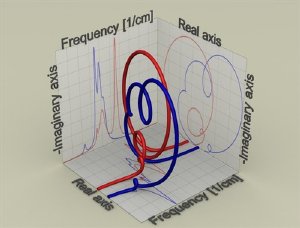Sep 15 2010
Research that made it to the cover of the authoritative scientific journal Analytical Chemistry this week has shown that the detection method developed by researchers at the University of Twente’s research institutes MESA+ and MIRA is even more sensitive than demonstrated earlier.
Not only can it detect molecules accurately, it also shows the difference between them very clearly. The research was co-financed by Nanoned (a national nanotechnology R&D initiative that combines the Dutch strengths in nanoscience and technology in a national network), the Foundation for Fundamental Research on Matter (FOM) and the Netherlands Organization for Scientific Research (NWO).
 The 'molecular roller coaster' of two molecules (illustration: Florian Sterl)
The 'molecular roller coaster' of two molecules (illustration: Florian Sterl)
The molecules in a solution can be measured with a technology known as Coherent Anti-Stokes Raman Spectroscopy (CARS). Molecules that are very similar are, however, difficult to distinguish from one another. University of Twente (UT) researchers had, at an earlier stage, already introduced an improved form of CARS, which is much more sensitive and with which molecules can be tracked down in a very much lower concentration. In the study now published, they show that their method is not only much more sensitive, but that it also enables them to detect up to ten different sorts of molecules simultaneously. In the past, several successive measurements had to be carried out to achieve this, so work of this kind can now be carried out considerably faster. This technology also makes it possible for researchers to 'film' how medicines are released from a tablet or how a living cell burns fats. The researchers envisage applications in the pharmaceutical industry and cell biology research for this technology.
Molecular roller coaster
If you shine laser light on molecules, some of these molecules will absorb photons (light particles) and emit new photons. The emitted photons then have a higher energy level than the original photons. With the aid of Anti-Stokes Raman Spectroscopy, these photons can be caught and used to determine which molecules are present in the solution. The method looks at the amplitude of the vibrations of the light. The UT researchers' new method looks not only at the amplitude of the vibration, but also at the phase. Plotting the amplitude and the phase of the vibration of the light in a graph creates a complicated spiral dubbed the 'molecular roller coaster' by the researchers. As a result of this roller coaster, similar substances can easily be distinguished from one another.